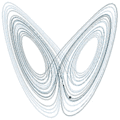Template:Selected anniversaries/May 23: Difference between revisions
No edit summary |
No edit summary |
||
| Line 26: | Line 26: | ||
||1837: Anatole Mallet born ... mechanical engineer ... inventor of the first successful compound system for a railway steam locomotive, patented in 1874. Pic. | ||1837: Anatole Mallet born ... mechanical engineer ... inventor of the first successful compound system for a railway steam locomotive, patented in 1874. Pic. | ||
||1848: Otto Lilienthal born ... pilot and engineer. | ||1848: Otto Lilienthal born ... pilot and engineer. PAGE EXISTS. | ||
||1887: Thoralf Skolem born ... mathematician and | ||1887: Thoralf Skolem born ... mathematician and logician. | ||
||1857: Augustin-Louis Cauchy dies ... mathematician and academic. Pic. | ||1857: Augustin-Louis Cauchy dies ... mathematician and academic. Pic. | ||
| Line 36: | Line 36: | ||
||1889: Georges Henri Halphen dies ... mathematician. He was known for his work in geometry, particularly in enumerative geometry and the singularity theory of algebraic curves, in algebraic geometry. Pic. | ||1889: Georges Henri Halphen dies ... mathematician. He was known for his work in geometry, particularly in enumerative geometry and the singularity theory of algebraic curves, in algebraic geometry. Pic. | ||
||1908: John Bardeen born ... physicist and engineer, Nobel Prize laureate. | ||1908: John Bardeen born ... physicist and engineer, Nobel Prize laureate. Pic. | ||
||1911: Leslie Howarth born ... mathematician who dealt with hydrodynamics and aerodynamics. Pic: http://rsbm.royalsocietypublishing.org/content/roybiogmem/55/107.full.pdf | ||1911: Leslie Howarth born ... mathematician who dealt with hydrodynamics and aerodynamics. Pic: http://rsbm.royalsocietypublishing.org/content/roybiogmem/55/107.full.pdf | ||
| Line 42: | Line 42: | ||
||1912: Samuel Curran born ... physicist and the first Principal and Vice-Chancellor of the University of Strathclyde – the first of the new technical universities in Britain. He is the inventor of the scintillation counter, the proportional counter, and the proximity fuse. Pic: https://www.universitystory.gla.ac.uk/biography/?id=WH0190&type=P | ||1912: Samuel Curran born ... physicist and the first Principal and Vice-Chancellor of the University of Strathclyde – the first of the new technical universities in Britain. He is the inventor of the scintillation counter, the proportional counter, and the proximity fuse. Pic: https://www.universitystory.gla.ac.uk/biography/?id=WH0190&type=P | ||
||1915: S. Donald Stookey born ... physicist and chemist, invented CorningWare. | ||1915: S. Donald Stookey born ... physicist and chemist, invented CorningWare. Pic search yes: https://www.google.com/search?q=S.+Donald+Stookey&oq=S.+Donald+Stookey | ||
||1915: Pierre-Émile Martin dies ... engineer who adapted the steelmaking process by using the open-hearth regenerative furnace invented by Charles William Siemens and Friedrich Siemens (1856), now known as the Siemens-Martin process. The Siemens' idea was to capture heat from exhaust gases in chambers flanking the furnace containing fire-bricks. When the flow is changed to preheat the input gases using recycled energy stored in the bricks, huge fuel savings result. Pic. | ||1915: Pierre-Émile Martin dies ... engineer who adapted the steelmaking process by using the open-hearth regenerative furnace invented by Charles William Siemens and Friedrich Siemens (1856), now known as the Siemens-Martin process. The Siemens' idea was to capture heat from exhaust gases in chambers flanking the furnace containing fire-bricks. When the flow is changed to preheat the input gases using recycled energy stored in the bricks, huge fuel savings result. Pic. | ||
Revision as of 09:23, 22 May 2019
1707: Botanist, physician, and zoologist Carl Linnaeus born. He will formalize the binomial nomenclature system of taxonomy.
1895: Mineralogist, physicist, and mathematician Franz Ernst Neumann dies. His 1831 study on the specific heats of compounds included what is now known as Neumann's Law: the molecular heat of a compound is equal to the sum of the atomic heats of its constituents.
1917: Mathematician Edward Lorenz born. He will introduce the strange attractor notion, and coin the term butterfly effect.
1918: Lorenz system diagram says it "owes everything to Papa Lorenz."
1982: Electrical engineer Florence Violet McKenzie dies. She was Australia's first female electrical engineer, founder of the Women's Emergency Signalling Corps (WESC), and lifelong promoter for technical education for women.
1994: George P. Metesky dies. He terrorized New York City for 16 years in the 1940s and 1950s with explosives that he planted in theaters, terminals, libraries, and offices.
2005: Flow Chart voted Picture of the Day by the citizens of New Minneapolis, Canada.






